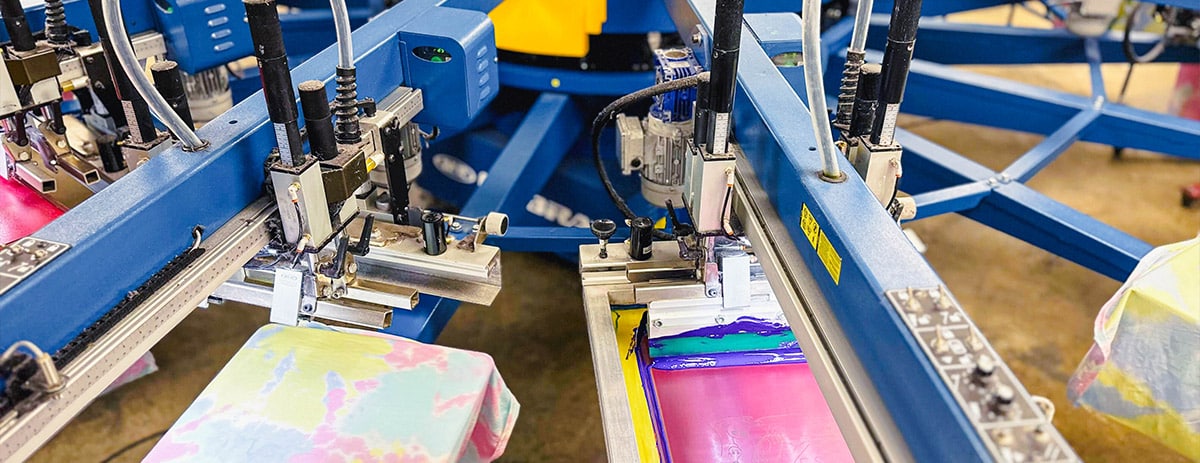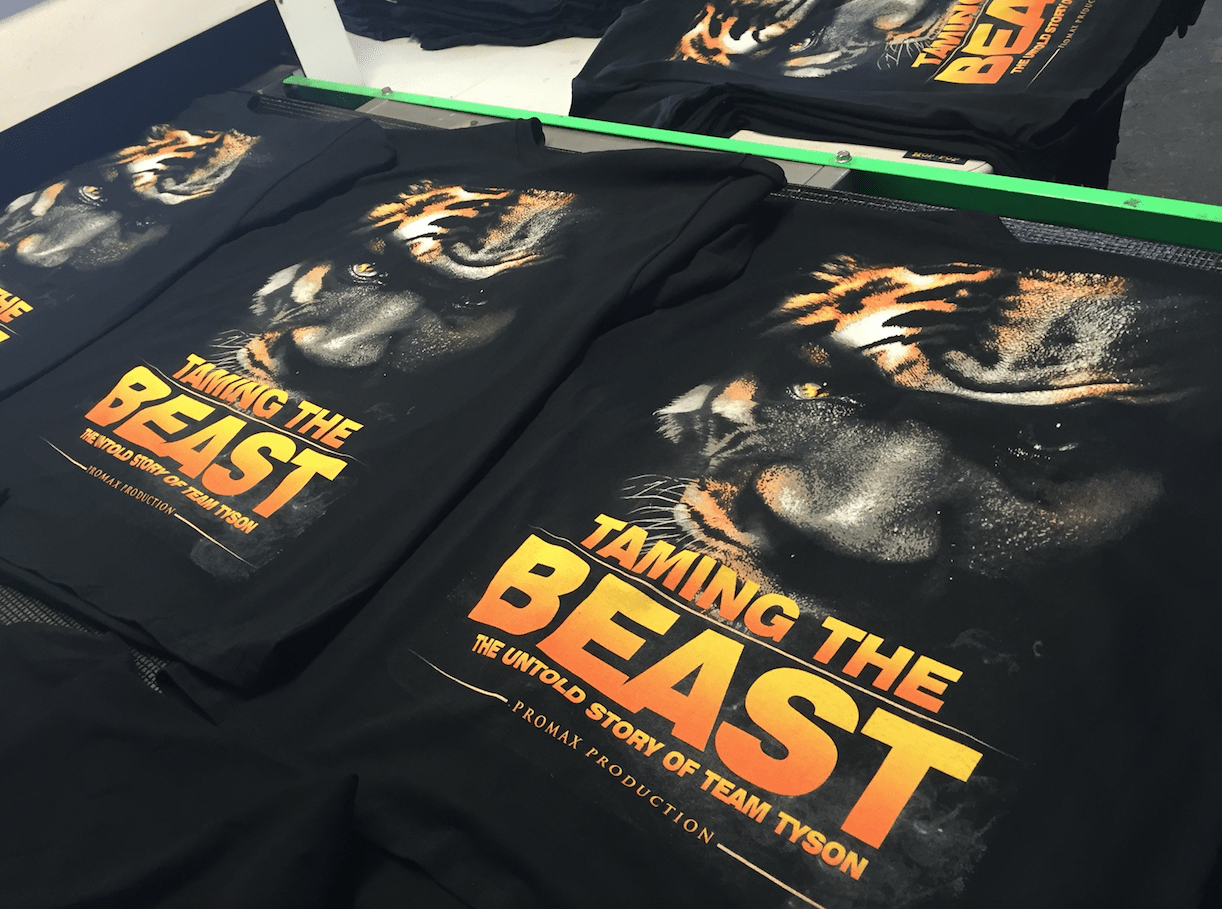Screen Printing Uncovered: Every Little Thing You Required to Understand About Tee Shirt and Garment Printing Strategies
Display printing is a remarkable approach that combines art with strategy, providing limitless possibilities for creative thinking. Prepared to check out the crucial aspects that make screen publishing an art kind?
The Fundamentals of Display Printing: Exactly How It Works
When you dive right into screen printing, you'll uncover it's both a scientific research and an art. At its core, screen printing includes developing a stencil, or screen, that enables ink to pass through just in certain areas.
Position the screen over the fabric, then utilize a squeegee to press ink via the display onto the garment. Each step is important, and grasping them will certainly raise your screen printing abilities, changing straightforward garments right into one-of-a-kind, meaningful items.
Kinds of Screen Printing Methods
As soon as you grasp the essentials of display printing, it's time to explore the different techniques that can elevate your designs. One prominent technique is typical display printing, where ink is pushed through a stenciled screen. This strategy is terrific for bold, vivid colors. Then there's water-based ink printing, which supplies a softer feeling and is eco-friendly, but it needs a different technique to healing.
If you're intending for fine details, think about discharge printing. This technique gets rid of color from the material, leaving a soft, vintage appearance. An additional option is plastisol printing, recognized for its longevity and brilliant colors, making it a favored for many brand names. Experiment with halftone printing to create slope results and elaborate layouts. Each method has its distinct charm, so do not hesitate to attempt them bent on find what fits your design best!
Necessary Equipment for Screen Printing
To accomplish sensational lead to display printing, having the right equipment is essential. You'll need a durable screen printing framework, which holds the mesh that moves your layout onto the garment. Next off, purchase high-quality squeegees; these are vital for using ink uniformly throughout the screen. You'll also call for an excellent exposure unit to create your screens, as well as a washout booth for cleansing them after usage. A dependable warmth resource, like a conveyor clothes dryer or warmth press, is important for treating your prints to ensure long life. Don't forget a proper work space, equipped with tables and storage space for your products. Safety gear, such as gloves and masks, will maintain you risk-free from chemicals and inks. With the right tools, you'll be well on your way to creating professional-quality prints.
Choosing the Right Inks and Materials
When choosing inks and materials for display printing, you need to think about the kind of ink that works ideal for your project. Think of material compatibility to assure your styles look fantastic and last long. Check out eco-friendly ink choices to make your printing procedure a lot more sustainable.
Types of Screen Inks
Picking the appropriate screen ink is crucial for accomplishing vivid, resilient prints that satisfy your project's demands. There are several types of display inks to examine. Plastisol ink is prominent for its flexibility and simplicity of usage, supplying excellent color opacity on dark materials. Water-based ink, on the other hand, uses a softer feeling and is environmentally friendly, making it optimal for those looking to decrease their environmental impact. Discharge inks remove color from the material, leading to a soft, vintage look but need details handling. Ultimately, specialized inks, such as glow-in-the-dark or metal, can add distinct effects to your styles. Examine your job requirements and choose the ink that aligns best with your desired result.

Fabric Compatibility Factors To Consider
Understanding fabric compatibility is crucial for attaining high-quality display prints, specifically since different materials respond distinctly to various inks. When choosing inks, consider the fabric kind-- cotton, polyester, or blends. For cotton, water-based inks function well, offering softness and breathability. Polyester, on the various other hand, often requires plastisol inks for better adhesion and vibrant shades. If you're publishing on blends, you may require to utilize a combination of both kinds. Always test your inks on example material to guarantee they adhere correctly and maintain shade stability. In addition, remember that fabric weight and appearance can influence the last result, so selecting the best ink and material combo is essential for your job's success.
Eco-Friendly Ink Options
Eco-friendly inks are coming to be a popular option for screen printers who want to lessen their ecological influence while keeping quality. When choosing inks, take into consideration water-based inks, which are much less hazardous and simpler to cleanse up contrasted to traditional solvents.
Additionally, look for inks made from eco-friendly sources, such as soy or vegetable-based options. By choosing the right inks and materials, you'll not only create stunning layouts however additionally add to a much more sustainable printing procedure. Make the button, and your prints will show your commitment to the atmosphere!
Preparing Your Style for Display Printing

Submit Style Needs
To assure your style looks dynamic and sharp on textile, you'll require to pay very close attention to submit format needs for display printing. Begin with vector data like AI or EPS, as they can be scaled without losing quality. If you make use of raster photos, choose high-resolution files, such as TIFF or PNG, ideally at 300 DPI. Avoid making use of JPEGs, as they can shed clearness when resized. Also, see to it your layout has a clear background to avoid unwanted white edges on your prints. Ultimately, keep color settings in mind; CMYK is conventional for screen printing, so transform your RGB creates accordingly. By following these standards, you'll establish your art work up for a successful print.
Color Splitting Up Techniques
Shade splitting up is a vital step in preparing your design for screen printing, and grasping it can substantially boost your print high quality. You'll need to break your design into private shades, as each color requires a different display throughout printing. This accuracy not just ensures precise color depiction yet additionally simplifies the printing procedure.
Resolution and Size
Accomplishing the very best cause screen printing begins with guaranteeing your layout has the appropriate resolution and dimension. Ideally, your art work must be at least 300 DPI (dots per inch) for sharp, clear prints. If you use reduced resolution, your last product might look unprofessional and pixelated.
When it involves dimension, think about the dimensions of your print location. Layout your art work to match the final print dimension, ideally producing it in the actual measurements you'll be printing. This means, you'll prevent any unanticipated scaling problems.
Always inspect your layout in both vector and raster styles. Vector graphics can be scaled without shedding high quality, making them suitable for screen printing. Preparing appropriately will assure your design looks remarkable on every garment!
Step-by-Step Display Printing Process
Screen printing is a dynamic process that permits you to create lively layouts on different surface areas. To get started, you'll require a display, emulsion, and your selected ink. Prepare your screen by cleansing it thoroughly. Next, apply the solution evenly and let it completely dry in a dark location. As soon as dry, reveal your display to light with your design positioned on it, which will solidify the solution where the light hits, creating a stencil - screen printing kit.
After cleaning out the unexposed emulsion, your display is ready. Establish it up on your printing surface area and straighten your garment below it. Put ink onto the display and make use of a squeegee to push the ink through the stencil onto the material. Raise the display carefully and let the print completely dry. Finally, treat the ink utilizing warm to ensure durability. That's it! You've effectively display published your style.
Tips for Successful Display Printing Projects
While you're diving right into your display printing jobs, keep in mind that preparation is crucial to success. Begin by gathering all your materials-- inks, garments, mops, and screens. A tidy work area helps protect against undesirable errors, so clean prior to you begin.
Following, confirm your art work is high-resolution and appropriately sized for your garment. Examine your screen for proper direct exposure and clean it extensively to stay clear of spots. When mixing your inks, follow the manufacturer's standards to attain the ideal consistency.
Throughout printing, apply also pressure with your squeegee for consistent results. Do not rush; take your time to validate each print fulfills your requirements. After printing, let your garments completely dry completely before managing or packaging them.
Lastly, constantly keep a sample of your benefit future reference. In this manner, you can assess your progression and enhance your methods over time. Delighted printing!

Regularly Asked Concerns
How much time Does It Require To Establish a Display Printing Job?
Establishing a display printing job generally takes about thirty minutes to an hour. You'll prepare the screens, mix inks, and adjust journalism. The moment varies based upon complexity and experience, so stay arranged!
Can I Publish on Different Fabric Keys In Utilizing the Very Same Method?
Yes, you can print on various material kinds utilizing the same strategy, however you'll need to change your inks and settings. Some textiles soak up ink in a different way, so experimenting assurances the ideal results for each and every material.
What Prevail Mistakes to Prevent in Screen Printing?
When screen printing, stay clear of common mistakes like making use of the incorrect ink, overlooking correct exposure times, or avoiding pre-press checks. Always check your arrangement and maintain tidy screens to assure quality results each time.
Just How Can I Correctly Tidy and Keep My Screen Printing Devices?
To properly clean and preserve your display printing equipment, you ought to on a regular basis silk screen printing wash displays with ideal solvents, inspect mops for wear, and assure all tools are kept dust-free and dry. Uniformity improves and stops expensive fixings efficiency.
Is Display Printing Environmentally Pleasant Contrasted to Various Other Techniques?
Display printing can be a lot more eco pleasant than various other approaches, specifically if you use eco-conscious products and water-based inks. By selecting sustainable materials and methods, you decrease waste and decrease your effect on the earth.
Display Printing Uncovered: Every Little Thing You Need to Know Regarding Tee Shirt and Garment Printing Methods
At its core, screen printing includes developing a pattern, or screen, that allows ink to pass via just in particular areas. Position the display over the material, then use a squeegee to push ink via the display onto the garment. One prominent method is conventional screen printing, where ink is pressed with a stenciled screen.When choosing inks and products for display printing, you need to take into account the kind of ink that works best for your project.